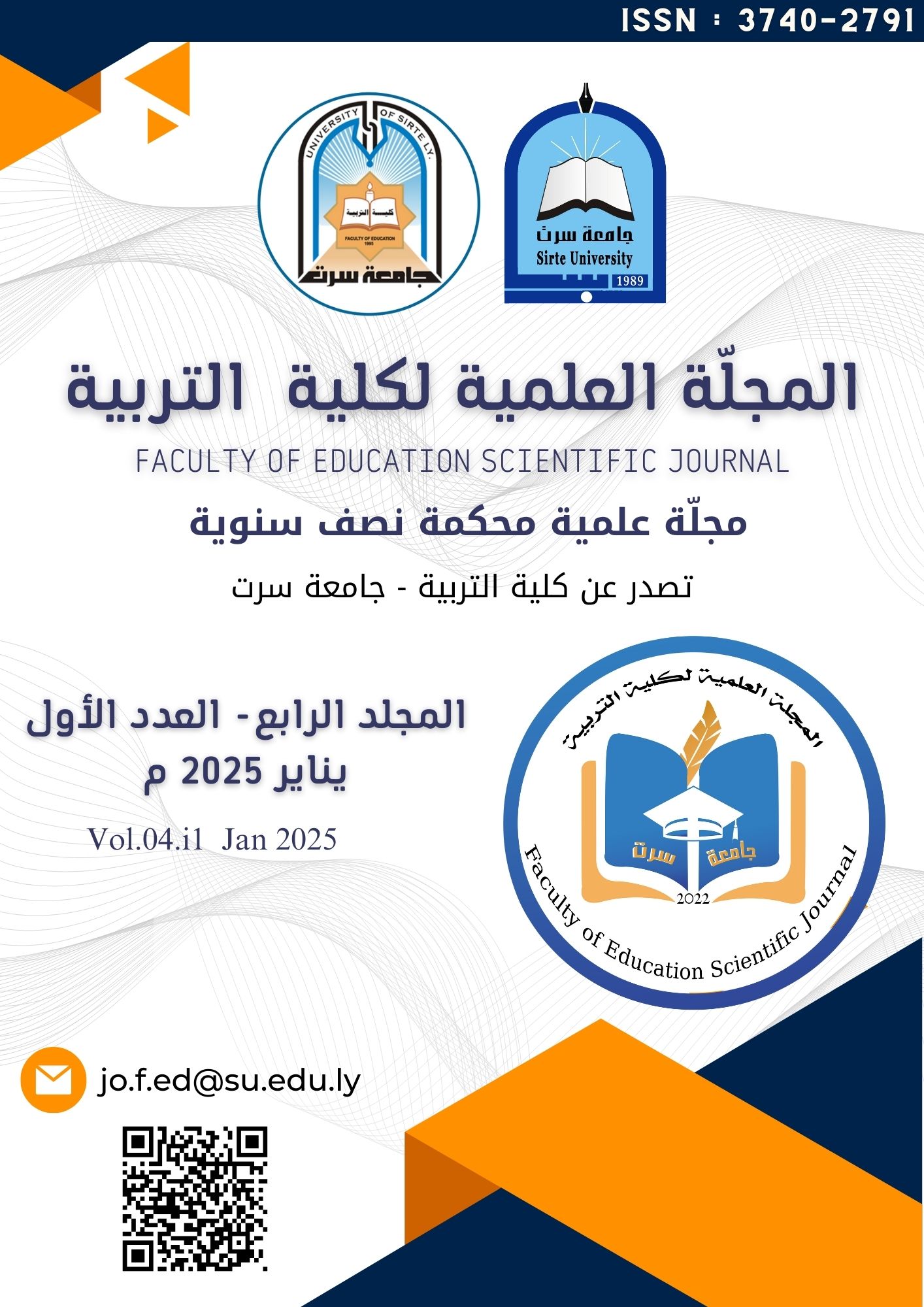الفـرس بيــن التـشيّــع والتصوّف -دراسة تاريخيــة
DOI:
https://doi.org/10.37375/foej.v4i1.3145الكلمات المفتاحية:
الحركات، الثورات، المعتقدات، الأفكار، التشيع، التصوف، الصوفية، الفرسالملخص
تعد دراسة المذاهب والعقائد من أهم الدراسات الفكرية التي تهتم بتأثير الأفكار وما يرتبط بها من سياسات وتوجهات وخلافات في الآراء، وهذا البحث يعنى بدراسة التشيع والتصوف من حيث الجذور والنشأة بالإضافة إلى الروافد التي أدخلها الفرس على هذه المعتقدات.
كما يدرس البحث التحولات والتغيرات التي طرأت على هذه المعتقدات من قِبل من تبنوها ودخلوا فيها خاصة الفرس، حيث استخدموا التشيع وسيلة للوصول إلى مبتغاهم وهو بلوغ السلطة ، لذا لعب الفرس دورًا كبيرًا في صياغة الفكر الإسلامي خلال الفترة الوسيطة، وليس ذلك فحسب بل وصل بهم الأمر إلى التجائهم للتصوف بعد أن خسروا جل المعارك العسكرية التي خاضوها لمناصرة الشيعة والتشيع، كما أنهم حرفوا الأفكار والأسس التي قام عليها التشيع فأدخلوا الغلو على الأئمة ومبدأ التقية وغيرها، ومزجوا التشيع بالصوفية لاستمالة عامة الناس ، وقد برز عنهم العديد من الأعلام الذين كان لهم ثنائي المعتقد مثل: أبو يزيد البسطامي وإبراهيم بن أدهم وغيرهم.
كما أنهم وظفوا أفكارهم الغالية في الدخول باسم الدين في حركات وثورات مسلحة ضد السلطة الحاكمة، كمشاركتهم في الثورات العلوية بزعمهم نصرة لآل البيت، بالإضافة إلى انتقالهم إلى مناصرة العباسيين ضد الأمويين، ثم انقلابهم عليهم، مما يفسر أن الفرس ليس لهم مبدأ يرتكزون عليه وإنما اتخذوا التشيع والتصوف كوسيلة ومزجوه بمعتقداتهم القديمة مثل المزدكية والمانوية لاستعادة مجدهم وإمبراطوريتهم القديمة.
المراجع
اتسعت أنماط جديدة من الكتابات التاريخية لعل من أهمها ما سُمي بالتاريخ الفكري الذي يهتم بدراسة المذاهب والعقائد الفكرية، وما يلتصق بها من علاقات بين تلك العقائد بعضها البعض من حيث النشأة والتطور والتأثير، وهو ما يهتم بدراسة الأصل الأول للعقيدة والتحولات التي طرأت عليها من أطوار في أفكار ومعتقدات أخرى، ومن هذه المعطيات اخترت عنوانا للبحث ب (الفرس بين التشيع والتصوف).
فعندما تحطمت الإمبراطورية الفارسية على يد العرب المسلمين كانت ترى في نفسها إمبراطورية على أرضها لها نظمها السياسية والعسكرية ولها آدابها ولغاتها وفلسفتها، فكان هذا وضعًا صعبًا بالنسبة للفرس فالفتح الإسلامي أصبح مهددا لوجود الثقافة الفارسية نفسها.
فمعتقد الشيعة بالعموم تندرج تحت لوائه فرق كثيرة بعضها ظهر في عهد على - -كالسبأية، ومعظمها بعده كالمختارية والكيسانية وبعضها في عهد جعفر الصادق كالخطابية، وبعضها بعد وفاته كالإسماعيلية والاثنا عشرية، والنصيرية والقرامطة والدروز، وجميع هذه الفرق تندرج تحت التشيع والشيعة، والبعض منها أخذ طريقة المتصوفة.
ويعد التشيع من أحد المعتقدات الدينية الذي له ميزة الديناميكية لأنه استطاع التأقلم مع المحيط البيئي والظرف الزماني بما له من رؤى وأفكار ومفاهيم استخدمت لشخصنة موضوعات معينة، ويمثل الفكر السياسي للشيعة الفرس محورًا مهمًا، بلغ من خلاله ذروة تطور المذهب لديهم على الجانب التنظيري ومن ثم الخروج في حركات وثورات مسلحة.











